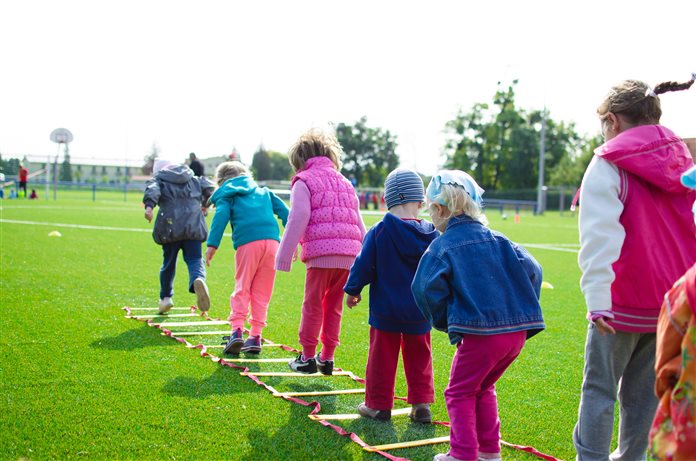Fiziksel aktivite nedir?
Fiziksel aktivite, çocukların hareket etmesini sağlayan, nefes almalarının daha hızlı hale gelmesini ve kalplerinin daha hızlı atmasını sağlayan her türlü aktiviteyi ifade eder. Çocuklar günün herhangi bir saatinde fiziksel olarak birçok farklı şekilde aktif olabilirler.
Hareketsiz davranış, çocukların çok az fiziksel hareket yaptıkları zamandır. Bu televizyon izlerken veya tablet, bilgisayar veya telefonlarda oynarken uzun süre oturmayı içerir.
Çocuğunuzun hareketsiz zamanını hafif fiziksel aktivitelerle bile değiştirmek sağlık açısından fayda sağlayabilir. Çocukların daha az oturmasına ve daha iyi sağlık için ayağa kalkmasına yardımcı olun
Çocuklarımın aktif olarak ne kadar zaman harcaması gerekiyor?
Çocuklar ve ergenler günde en az 1 saat fiziksel aktivite biriktirmelidir*. 60 dakikanın bir seferde hepsini yapmak zorunda değilsiniz. Bunu, çocuğunuzun fiziksel aktivitesini gün boyunca biriktirmesi için oluşturabilirsiniz. Günlük fiziksel aktivite; ücretsiz oyun, oyunlar, spor, ulaşım (yürüyüş, bisiklet), rekreasyon ve beden eğitimini içerebilir.
Çocuklarımın aktif olmalarını nasıl sağlayabilirim?
Çocuğunuz sizden sağlıklı aktif yaşam hakkında en çok şey öğrenir. Çocuklar bizi yansıtır, bu yüzden doğru çevreyi ve günlük rutini oluşturmak bize kalmıştır. Çocuğunuza hem organize sporlar gibi yapılandırılmış etkinliklerde hem de ip atlama ve oyun alanında oynama gibi yapılandırılmamış etkinliklerde aktif olmaları için çok zaman verin.
Çocuklar ve gençler, çeşitli ortamlara (TV şovları, videolar, filmler, oyunlar) bakarak her gün bir ekranın önünde (TV'ler, akıllı telefonlar, tabletler ve diğer cihazlar) saatler geçiriyorlar. Çok fazla ekran süresi ve yeterince fiziksel aktivite olmaması, çocuklukta obezite sorununu tetikler. Çocukları daha aktif hale getirmenin en iyi yollarından biri, özellikle TV veya diğer ekranları izlemek gibi hareketsiz etkinliklerde harcanan zamanı sınırlamaktır.
Fiziksel aktiviteyi teşvik etmek için İPUÇLARI
1. Çocuğunuzun sevdiği ve eğlenceli olan aktiviteleri seçin
2. Çok fazla çeşitlilik olduğundan ve çocuğunuzun farklı şeyler denediğinden emin olun
3. Çocuğunuzun gününe fiziksel aktivite oluşturun - örneğin, okula veya bir arkadaşınızın evine yürüyerek veya bisiklete binerek.
4. Çocuğunuzu evin etrafındaki etkinliklere dahil edin: yiyecekleri taşımak, arabayı yıkamak veya bahçeye yardım etmek
5. Çocuğunuzu, yürüyen merdiven veya asansör yerine merdivenleri kullanmaya teşvik edin.
6. Çocuklarınızın ve gençlerin bir ekranın önünde ne kadar zaman geçirecekleri, zaman dilimine karar verirken onları döngüde tutacakları için sınırlar koyun; programda bir sözleri varsa, takip etmeleri daha olasıdır.
7. TV'leri, bilgisayarları ve video oyunlarını çocuk yatak odalarından uzak tutun.
8. Yemek zamanları sırasında ekranları kapatın.
9. Kendiniz aktif olun ve tüm aileyi buna dahil edin.
1
Page 1 of 1






















